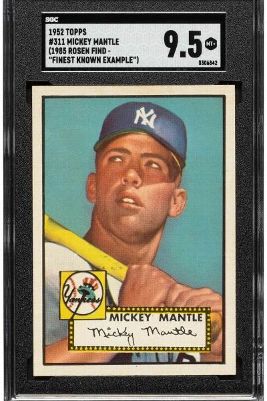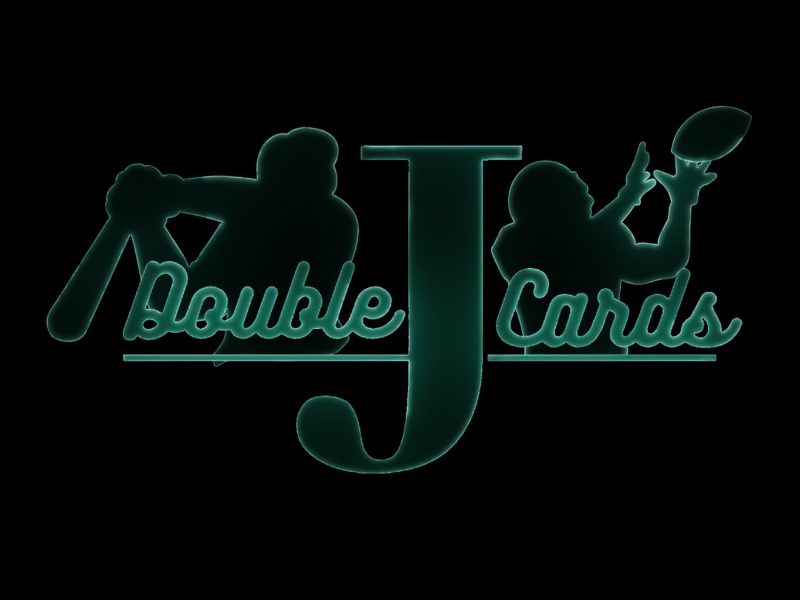The 1952 Topps Mickey Mantle rookie card is one of the most iconic and valuable sports trading cards in the history of the hobby. Known for its legendary status, breathtaking design, and fascinating backstory, the card encapsulates the golden age of baseball and has become a symbol of sports memorabilia collecting. But how did this card rise to prominence? What is the history behind it? In this post, we’ll explore the evolution of the 1952 Topps Mickey Mantle rookie card, from its creation to its present-day status as a grail card for collectors.
A New Era for Topps
To understand the significance of the 1952 Topps Mickey Mantle card, we must first examine the context in which it was produced. In 1952, the baseball card industry was dominated by two major companies: Bowman and Topps. Topps, originally a chewing gum company, was looking to make a name for itself in the trading card market. They had previously produced cards in the early 1950s, but the 1952 set was their first major attempt to compete with Bowman.
The 1952 Topps set was massive, containing 407 cards in total. This was a significant leap from the 1949 and 1950 Bowman sets, which were much smaller in comparison. With the 1952 set, Topps sought to make a bold statement, featuring stars like Willie Mays, Jackie Robinson, and, of course, Mickey Mantle.
Topps’ design for the 1952 set was striking and innovative. The cards were larger than previous offerings, measuring 2.5 inches by 3.5 inches, and featured bright colors, clear images, and a distinctive use of a colored background with a bold nameplate across the bottom. While the set as a whole was well-designed and visually appealing, it was the inclusion of Mickey Mantle that turned the 1952 Topps set into something truly special.
Mickey Mantle: The Player
Mickey Mantle, known as the “Commerce Comet,” was one of the most electrifying and beloved players in baseball history. Born in 1931 in Oklahoma, Mantle’s rise to stardom with the New York Yankees began in the early 1950s. By 1952, he had already established himself as one of the premier players in Major League Baseball. That year, Mantle earned his first All-Star appearance, and he would go on to lead the Yankees to multiple World Series championships throughout the decade.
Mantle’s combination of power, speed, and batting average made him an extraordinary talent. He was a switch-hitter, able to hit for both power and average from both sides of the plate, and his ability to change the game with one swing of the bat made him a fan favorite. Despite battling injuries throughout his career, Mantle’s reputation as a five-tool player grew, and he eventually became one of the most recognized figures in American sports.
When Topps secured the rights to produce Mantle’s card for the 1952 set, they undoubtedly understood the value of associating their brand with such a prominent player. However, it was the card itself that would go on to cement Mantle’s place in baseball history.
The 1952 Topps Card: Design and Features
The 1952 Topps Mickey Mantle card is easily recognizable, thanks to its vibrant color palette and clean, crisp design. The front features an action shot of Mantle in his Yankees uniform, looking ready to take a swing. The background of the card is a bright yellow, with a red and blue banner across the bottom that reads “Mickey Mantle” in bold white letters. His position, “New York Yankees,” is also included beneath his name.
The card’s reverse features a detailed biography of Mantle’s career up to that point, including his batting statistics, a list of his accomplishments, and a message that highlights his potential for future greatness. For collectors, the card’s reverse provides an extra layer of depth, further emphasizing Mantle’s status as a young superstar with a promising career ahead.
But despite the card’s visually appealing design, it wasn’t an immediate success with collectors. At the time, the 1952 set wasn’t particularly well-received, and the Mantle card was considered just one of many in the series. Unfortunately for Topps, a large number of the unsold 1952 Topps cards, including Mantle’s, were discarded when the company decided to cut its losses and clear out its inventory.
The Card’s Decline and Rediscovery
After its release in 1952, the Topps Mantle rookie card wasn’t an immediate sensation. At the time, the company overestimated the popularity of its baseball cards, and many boxes of the 1952 set remained unsold at various stores. As a result, Topps made the decision to send unsold cards from the 1952 series to be destroyed or to be shipped out to bargain bins in 1953. This meant that fewer of the cards survived, particularly those printed in the earlier part of the production run, including Mantle’s card.
To make matters worse, Mantle himself struggled with injuries early in his career. As a result, his career did not appear to have the trajectory that fans and experts had anticipated. But things started to turn around. Mantle had an extraordinary 1956 season, earning the American League MVP Award and hitting .353 with 52 home runs. As his career took off, so did the popularity of his rookie card.
By the late 1960s and early 1970s, sports card collecting was becoming more popular, and the demand for the 1952 Topps Mickey Mantle card began to rise. As Mantle’s legend continued to grow, collectors began to recognize the card as one of the most iconic in the hobby, especially due to its rarity. The combination of its status as a rookie card, its limited surviving numbers, and Mantle’s enduring legacy made it a must-have item for collectors.
The Card’s Value Surge
The 1952 Topps Mickey Mantle rookie card truly surged in value in the 1980s and beyond. As the sports card market exploded in popularity during the 1980s, collectors began to focus on the “big names” of baseball, and Mantle was certainly at the top of that list. In the 1980s, prices for a well-preserved version of the 1952 Mantle card rose into the thousands of dollars, a huge jump from its relatively low prices in the 1970s.
In 1991, a PSA 10 (Gem Mint) 1952 Topps Mickey Mantle card sold for $50,000 at auction, a price that was staggering at the time. As the years went on, the card’s value continued to climb, with high-grade examples reaching prices in the hundreds of thousands of dollars by the early 2000s.
In 2021, the card reached new heights when a PSA 9 (Mint) example of the 1952 Mantle card sold for $5.2 million at a Sotheby’s auction, setting a record for the most expensive sports card ever sold at the time. This sale marked the 1952 Mantle card’s transition from a beloved piece of sports memorabilia to an ultra-valuable investment item.
Why the 1952 Mantle Card Matters
The 1952 Topps Mickey Mantle rookie card’s rise to prominence is a perfect storm of factors: a great player, a striking design, historical significance, and rarity. It stands as a symbol of the golden age of baseball and the sports card hobby. Collectors admire it not only for its connection to Mantle’s career but also for its rarity and enduring appeal.
Today, the card is not only a highly sought-after collector’s item but also a piece of baseball history that transcends the world of sports memorabilia. As time goes on, it remains a benchmark by which other sports cards are measured—a true grail for collectors around the world.
In summary, the 1952 Topps Mickey Mantle rookie card is much more than just a baseball card; it is a symbol of the power of nostalgia, the enduring appeal of baseball, and the timeless allure of collecting. Its journey from obscurity to superstardom mirrors the rise of Mickey Mantle himself and remains one of the most fascinating stories in the world of sports memorabilia.





